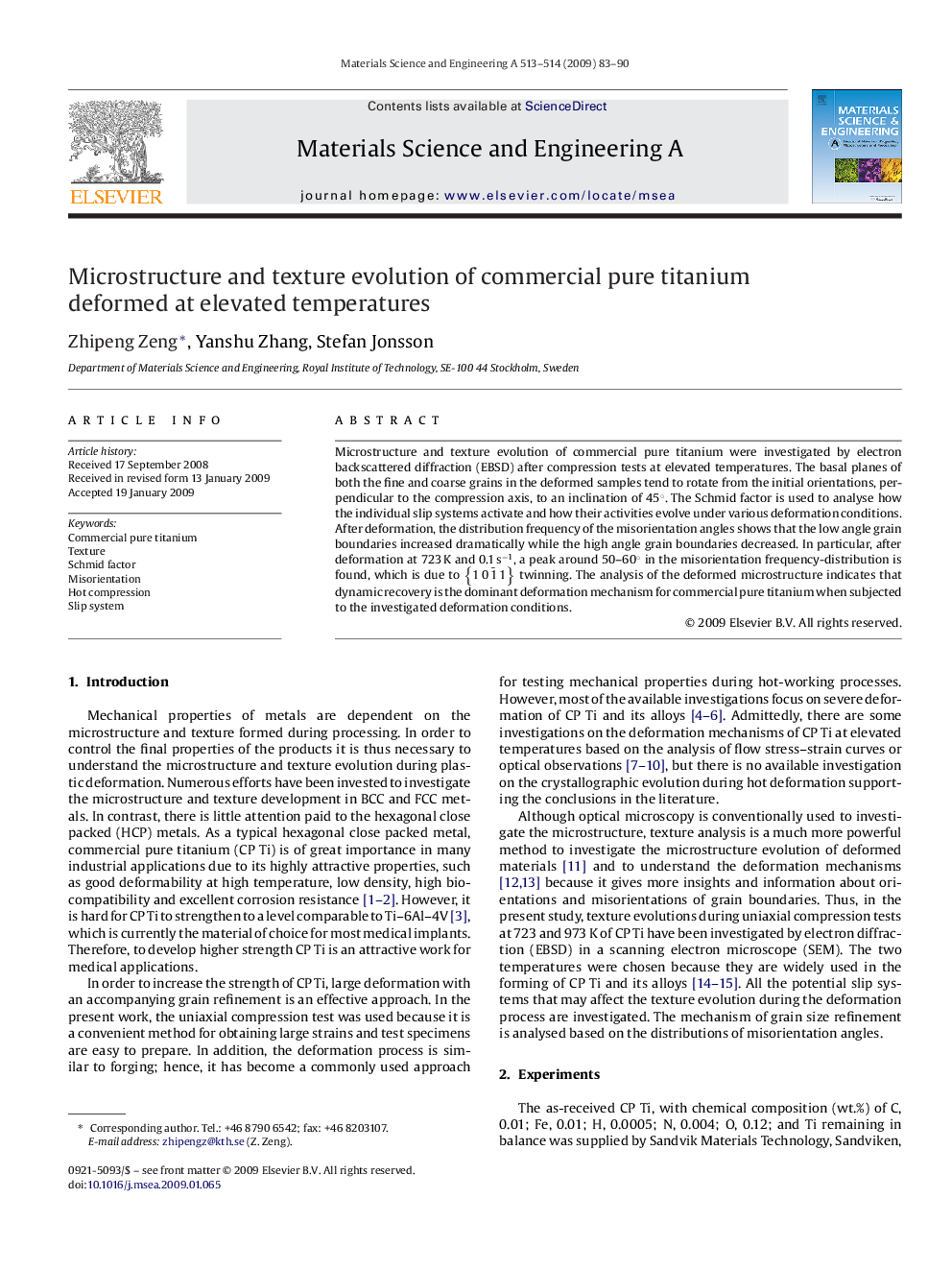| Article ID | Journal | Published Year | Pages | File Type |
|---|---|---|---|---|
| 1580461 | Materials Science and Engineering: A | 2009 | 8 Pages |
Microstructure and texture evolution of commercial pure titanium were investigated by electron backscattered diffraction (EBSD) after compression tests at elevated temperatures. The basal planes of both the fine and coarse grains in the deformed samples tend to rotate from the initial orientations, perpendicular to the compression axis, to an inclination of 45°. The Schmid factor is used to analyse how the individual slip systems activate and how their activities evolve under various deformation conditions. After deformation, the distribution frequency of the misorientation angles shows that the low angle grain boundaries increased dramatically while the high angle grain boundaries decreased. In particular, after deformation at 723 K and 0.1 s−1, a peak around 50–60° in the misorientation frequency-distribution is found, which is due to 1 0 1¯ 1 twinning. The analysis of the deformed microstructure indicates that dynamic recovery is the dominant deformation mechanism for commercial pure titanium when subjected to the investigated deformation conditions.
